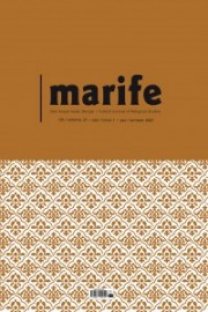MUHAMMED ESED’İN THE MESSAGE OF THE QUR’AN’ININ TÜRKÇE ÇEVİRİSİNİN TENKİDİ
Muhammed Esed’in Kur’an Mesajı adıyla Türkçeye çevrilen eseri, Türkçe ifade ve üslup açısından başarılı bir çalışmadır. Ancak Esed’in, son derece özgün bir üsluba ve ifade hususiyetlerine sahip olan The Message of The Qur’ân’da, kullandığı kelimeleri seçerken takındığı titiz ve istikrarlı tutumun ve bu tutumun neticesinde ortaya çıkan yeknesak üslubun, bu çeviride Türkçeye başarılı bir şekilde aktarıldığını söylemek mümkün görünmemektedir. Mütercimler, bazen de Esed’in ifade ve görüşlerini, yalın haliyle olduğu gibi çevirmek yerine, daha alımlı ve çarpıcı bir Türkçe ile ifade etmek ya da kendi görüş ve anlayışlarını ona söylettirmek adına, yorum katmak suretiyle çevirmişlerdir. Telifi andıran bu tür tercümeler, kullanılan Türkçe ifadelerin gücü açısından olumlu bir izlenim vermişse de kaynak dildeki metnin üslubunu yansıtamama hatta çarpıtma gibi bir olumsuzluğu da beraberinde getirmiştir. Mütercimlerin bazı basit hatalarından, yeterli düzeyde Arapça bilmedikleri, Kur’an’ın muhtevası ve tefsir ilmi hakkında yeterli alan bilgisine sahip olmadıkları anlaşılmaktadır. Ayrıca parantezlere boğulmuş olması, metnin akıcılığını engellemiştir. Dipnot numaraları ise bazen yanlış kelimelerin üzerine konulmuştur. Bunun sonucunda da metin düzenlemesi açısından, asıl metinle çeviri metin arasında farklılıklar oluşmuştur. Mevcut haliyle Türkçedeki Kur’an Mesajı sadece bir çeviri değildir. O, Esed, Koytak ve Ertürk tarafından yapılmış üç yazarlı bir meâl görünümündedir. Netice itibariyle bu çevirideki hataların en temel sebebi, mütercimlerin kendilerini asıl metne pek bağlı hissetmemeleri, dolayısıyla tercümede oldukça serbest bir yol izlemiş olmalarıdır
A CRITIQUE OF TURKISH TRANSLATION OF THE MESSAGE OF THE QUR’ÂN BY MUHAMMAD ASAD
Qur’ân by Muhammad Asad, is a successful work in terms of its linguistic style and expression in Turkish. Yet, Asad’s careful selection and consistency when choosing particular words and phrases, do not seem to have been reflected on the Turkish rendering at all. Moreover, instead of simply translating the text, the translators, sometimes include additional interpretations of Asad’s views with an intention to ei- ther use a more catchy style or to promote their own ideas through the use of Asad’s name. This kind of translation that resembles authorship, may give a positive impression to the Turkish readers in terms of its style, yet it distorts Asad’s own lin- guistic style and his views. Some of the mistakes observed in the Kur’an Mesajı, in- dicate that the translators do not know Arabic. Neither do they have enough back- ground information regarding the contents of the Qur’ân or the field of tafsīr. In addition to this, the use of too many parentheses seems to have damaged the flu- ency of the text. Also some footnotes are mistakenly put for the wrong words. As a result, some serious divergences have occurred between the original and the trans- lated text. The way it is written, Kur’an Mesajı, cannot be regarded as only a trans- lation. Rather, it looks like a compilation written by three different authors: Asad, Koytak and Ertürk. In conclusion, the main mistakes of this translation generate from the fact that the translators did not feel themselves bound to the original text and used a rather free and inconsistent method
